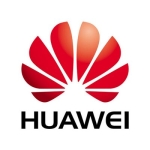What is our primary use case?
I use it in the financial sector for banking, specifically for core banking applications, to serve our applications. We served different types of customers, ranging from oil and gas to the financial sector, education, and healthcare. We deployed Dell PowerStore in different industry segments, such as manufacturing and retail, for example.
How has it helped my organization?
The most impactful benefit is the data reduction and the deduplication.
Replication is easy to implement, and you don't need higher bandwidth to do replication across sites. It's quite useful.
What is most valuable?
The most impactful feature is the data reduction. Data reduction significantly saves costs. If I purchase, for example, twenty terabytes of storage, the effective capacity gives me somewhere around eighty terabytes. I pay for ten terabytes but gain eighty terabytes or fifty terabytes, for example. It depends on the type of data I am storing on Dell PowerStore, but usually, the reduction ratio is very good. It's a fantastic feature.
I have read about the new ability to cluster multiple PowerStore appliances and it sounds like a very good feature.
Its management capabilities are very strong. It is easy to implement and very easy to manage. The interface is very user-friendly.
APEX AIOPS is quite useful. It sends helpful notifications. It tells you what bottleneck is in your storage environment. It gives you detailed orientation of why you are you are getting a bottleneck and where the problem is.
We have been able to consolidate data using PowerStore.
PowerStore's compression and duplication technologies are very important and useful. It's a good feature.
The data resiliency and cybersecurity are good. It covers all the aspects that modern storage should have.
The PowerStore cybersecurity and resiliency features meet our organizational needs.
PowerStore's built-in integrations for VMware are beneficial. It has all the features that need to be integrated into the environment. It's well aligned and tightly integrated.
What needs improvement?
One challenge in clustering is that when I create a cluster, the overall pool doesn't increase. Separate pools must be created for each controller node in the cluster. For instance, if I am creating a four-node or four-controller node cluster, I will have four different pools. If I want to enhance a pool beyond the maximum capacity of one controller node, I cannot increase it and must create a separate pool. This is a drawback in Dell PowerStore clustering.
Synchronous replication covers the entire replication process, but there are scenarios where implementing synchronous replication is necessary, and that feature is missing. Pricing must also be considered, as Dell PowerStore is quite expensive compared to competitors in the market like HPE Alletra, Huawei Dorado, or Hitachi storage, for example. It is quite expensive price-wise.
Feature-set wise, PowerStore is very rich. I think all of the necessary features are there. Price-wise, PowerStore is quite expensive compared to the competition in the market like HP Alletra, Huawei, or Hitachi storage. Dell is more expensive.
Competitors come in with better pricing and a similar feature set. Customers who already have PowerStore are very satisfied but when it comes to new storage requirements or a tech refresh, customers consider other options as well because of the price.
For how long have I used the solution?
I have used the solution for roughly five to seven years.
What do I think about the stability of the solution?
What do I think about the scalability of the solution?
Scaling up is quite easy, whereas scaling out my storage requires deployment in a clustered manner from day one. If it's not deployed in a clustered manner and I want to scale out, I cannot do so. Careful planning is required at the start of implementation to determine if scaling out will be needed in the future. If this is not addressed in time, I will have to start from scratch, which is a daunting task. There are challenges with scaling out if the environment is not prepared at the initial deployment. Otherwise, it is straightforward. It is very useful, as I can add drive storage incrementally instead of a large batch of disks each time. It is both very useful and cost-effective.
How are customer service and support?
Dell technical support is very good. They reach out to me promptly, deliver replacement parts quickly, and have local depots in three different cities across the country. Overall support is good.
How was the initial setup?
There are two major aspects when it comes to the setup. One is the migration from existing storage, and the other is how fast I can complete the initial setup of Dell PowerStore. From a migration perspective, Dell PowerStore has the capability to migrate data from existing storage, even from other brands. The second phase is the initial setup, which is very straightforward. In a few steps, I am ready to set it up. Then, in the third phase, configuring replication, it is very straightforward and can be done in a few clicks. In all three phases—from migration to initial setup and to replication of the DR side, or the secondary side, or a third site—Dell PowerStore is easy to install and implement.
What was our ROI?
When I plan a tech refresh, other competitors offer better pricing with similar feature sets. This is a challenge for customers who are already satisfied with Dell PowerStore. However, when it comes to new storage requirements or a tech refresh, I consider other options as well.
Which other solutions did I evaluate?
Normally, Dell PowerStore is an NVMe storage, but it does not offer all NVMe protocol support like NVMe over RoCE, NVMe over fiber channel, and NVMe over TCP while other competitors do offer various connectivity options that Dell PowerStore lacks. For example, it lacks F5 and NVMe over RoCE and NVMe over fiber channel. Although it's NVMe-ready storage, it is not end-to-end NVMe ready from a technical angle.
What other advice do I have?
My advice to anybody considering PowerStore is that if you need a scale-out feature in the future, you should consider it from day one. If Dell PowerStore is set up as a single appliance, scaling out will not be possible. This is the main point that needs consideration.
Overall, I would rate the solution eight out of ten.
Disclosure: My company has a business relationship with this vendor other than being a customer. Partner














